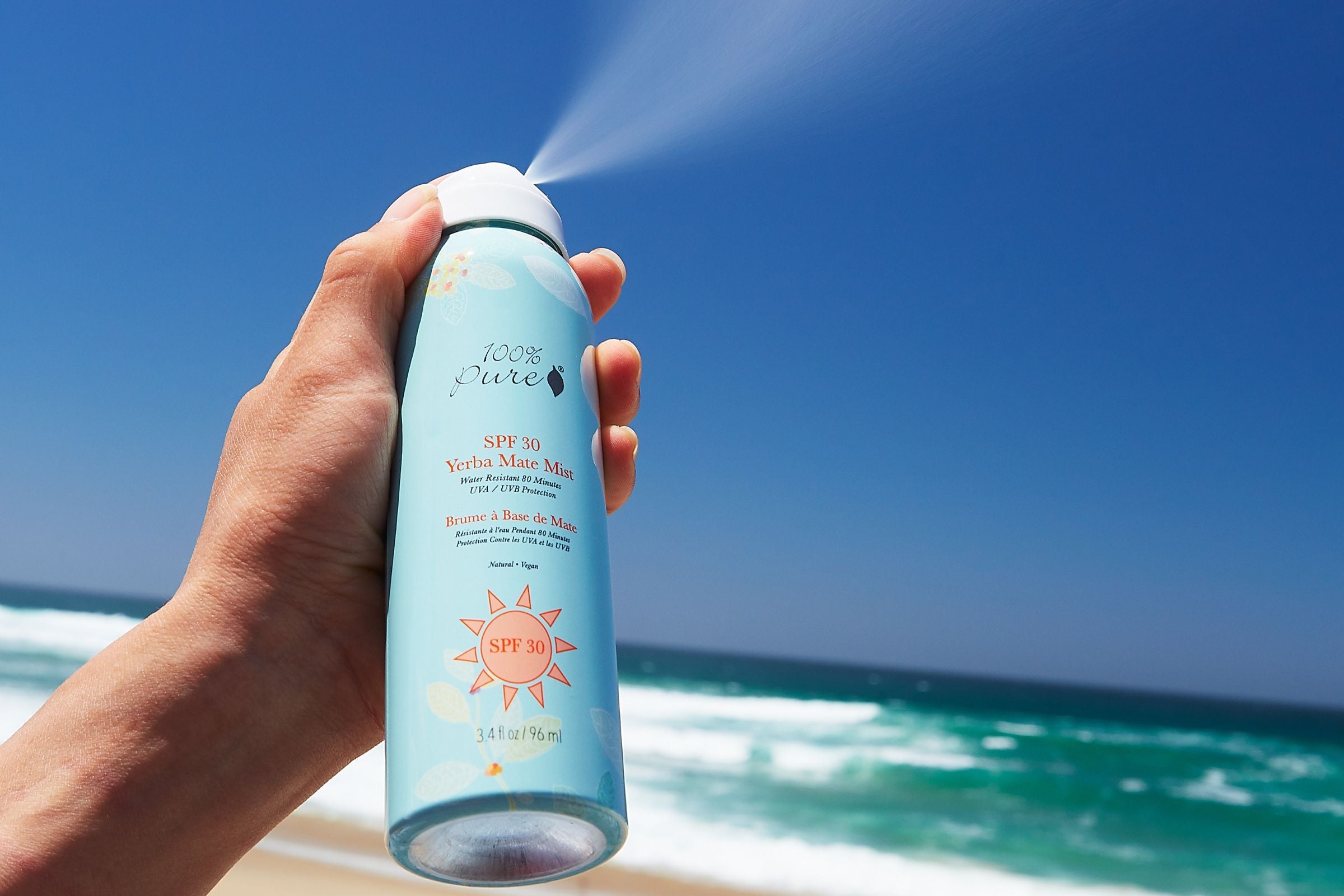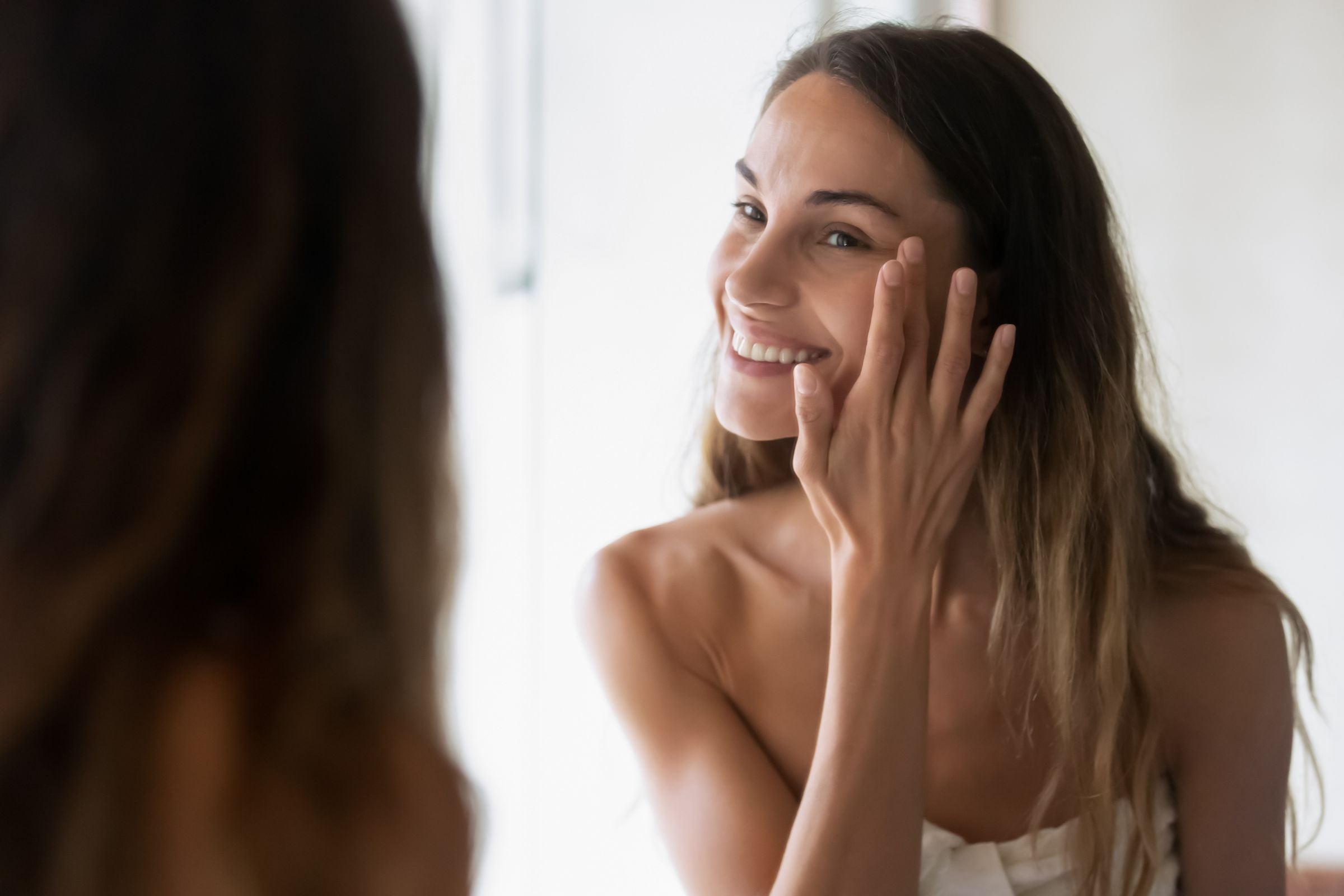The sun, a heavenly body that bestows light and life-sustaining warmth, has a dual nature. While its rays offer numerous health benefits, they also carry the potential for harm, particularly in the form of damaging UV radiation. Sunscreens have emerged as our shield against the harmful effects of the sun, traditionally based on chemical ingredients.
However, there has been a notable shift towards natural alternatives due to concerns about the environmental impact and potential health risks associated with synthetic sunscreens. This change signals a growing awareness of the need to protect our skin and the planet at the same time.
The essential role of Sunblock
UVA, UVB and UVC rays emitted by the sun have distinct effects on our skin. UVA rays penetrate deep, contributing to premature aging and causing DNA damage. UVB rays mainly affect the upper layers of the skin, leading to sunburn and increasing the risk of skin cancer. While the Earth’s atmosphere absorbs UVC rays, UVA and UVB are responsible for most sun-related skin problems.
Prolonged sun exposure can lead to sunburn, premature aging, and increased skin health risks. The good thing is that all these problems can be easily solved just by using a good sunscreen every day!
Why natural sunscreen stands out
Natural sunscreens have gained attention for many compelling reasons. Traditional sunscreens use chemical filters that, while effective against UV rays, can irritate sensitive skin. In contrast, natural sunscreens, with minerals such as zinc oxide and titanium dioxide, provide a gentler and safer option for sun protection.
Additionally, the environmental impact of synthetic sunscreens, with their potential to damage coral reefs and marine ecosystems, has raised concerns. Natural sunscreens, composed of environmentally friendly ingredients, promise effective sun protection without endangering the environment. This dual emphasis on skin and environmental well-being sets them apart as an attractive choice for conscious consumers.

Basic ingredients in natural sunscreen
Natural sunscreens are made with key ingredients that not only protect the skin from harmful UV rays, but also provide nourishing and skin-friendly benefits:
Zinc oxide: This mineral is the cornerstone of natural sunscreens. It provides broad-spectrum protection by forming a natural barrier on the skin’s surface that reflects and disperses UVA and UVB rays. Non-nanozinc oxide is preferred as it does not penetrate the skin, ensuring safety and efficacy while reducing the risk of skin irritation.
Titanium dioxide: Like zinc oxide, titanium dioxide is a mineral that acts as a natural barrier. It protects the skin by reflecting and dispersing UV rays, offering an extra layer of protection against the harmful effects of the sun.
Herbs and Oils: Many natural sunscreens include botanical extracts like aloe and green tea, along with nourishing oils like jojoba oil. Aloe provides soothing and moisturizing properties, making it ideal for soothing sun-exposed skin. Green tea is rich in antioxidants, which can help fight the harmful effects of UV radiation. Jojoba oil not only provides hydration but also acts as a natural emollient, leaving the skin soft and supple.
The best 100% PURE natural sunscreens
100% PURE is a beauty brand dedicated to providing pure, natural and environmentally responsible products. Our philosophy focuses on pure beauty, cruelty-free practices, and using only high-quality, plant-based ingredients. We understand the critical role that sunscreen plays in protecting our skin from harmful UV radiation. To this end, we have created sunscreens that not only provide effective sun protection but also prioritize the well-being of both the skin and the environment.
Our sunscreens, like Green Tea SPF 30 and Yerba Mate Mist SPF 30, are made with pure mineral-based ingredients like zinc oxide, which offer broad-spectrum protection. Let’s take a closer look at both sunscreens:
1. Green Tea SPF 30
PURE 100% Green Tea SPF 30 is a mineral-based sunscreen that combines zinc oxide with antioxidant-rich green tea. It offers broad-spectrum protection from UVA and UVB rays while nourishing the skin.
Benefits
Provides SPF 30 protection.
Green tea extract provides antioxidant benefits.
The mineral formula is gentle on sensitive skin.
What do our customers like about it?
- “Great sunscreen. Creamy, hydrating formula.” PY from USA
- “This is the only sunscreen I use and I don’t get any sun pigmentation or sunburn.” – Deborah from USA
- “Green tea goodness. I love the scent and blendability of this product” – Aly from USA
2. Yerba Mate Mist SPF 30
Yerba Mate Mist SPF 30 is a convenient and environmentally friendly sunscreen spray. Incorporates zinc oxide for UV protection and yerba mate tea for added antioxidant benefits.
Benefits
Easy mist application for use on the go.
Contains yerba mate tea, which offers extra antioxidant protection.
Suitable for all skin types.
What do our customers like about it?
- “Loved this sunscreen. Great mist and easy application.” – Deena from USA
- “I have super acne prone skin and it doesn’t break out. I apply it once on my face at about 10 am. most mornings and the app definitely keeps me protected all day.” – Katie from USA
- “My goodness this is one of the best natural sunscreen sprays out there. It goes on very easily and doesn’t cake or burn.” – Sophie from USA
Apply and reapply: Getting it right
Quantity matters: To ensure full coverage, apply an adequate amount. A general rule of thumb is to use about one ounce (a glass full) for your entire body. For the face, use about a nickel-sized amount.
Timing Perfect: Apply sunscreen 15-30 minutes before sun exposure. This allows the product to adhere properly to the skin.
Reapplication rule: Reapply every two hours or more often if swimming or sweating. Reapplication is vital to maintain continuous protection and should not be overlooked for all-day sun exposure.
Newsletter Sign up
For more blog updates and exclusive discounts

Matching your sunscreen
For an effective skincare routine, consider layering sunscreen with other products like serums and moisturizers. Start with your serum, which can provide added benefits like free-radical-fighting antioxidants. Follow with sunscreen to ensure UV protection. Finish with moisturizer to lock in hydration.
Antioxidant serums, in particular, can enhance the effectiveness of sunscreens. They help protect the skin from oxidative stress caused by UV radiation, reducing the risk of premature aging. This is vital for maintaining healthy skin and complements the protective role of your sunscreen.
|
AM routine |
PM routine |
|
Black Tea Grass Jelly Antioxidant Serum This serum is designed to protect the skin from damage caused by free radicals. Contains black tea, a powerful antioxidant that protects against free radicals. By neutralizing these harmful molecules, it helps maintain youthful and glowing skin. |
Multivitamins + Antioxidants Powerful PM serum In your evening routine, this serum fights daily skin damage, including the effects of pollution and UV exposure. Note that it contains vitamin A, so using sunscreen the next day is imperative to prevent photosensitivity. |
|
Antioxidant moisturizing cream from black tea This moisturizer, also infused with black tea, boosts the protective benefits of your sunscreen. The antioxidant properties of black tea support the reversal of free radical damage, ensuring your skin remains supple and rejuvenated against UV exposure. |
Multivitamins + Antioxidants Ultra Riché PM Treatment This skincare product works to repair and rejuvenate your skin overnight. With a combination of vitamins and antioxidants, it fights the daily damage your skin faces. As it contains vitamin A, it is essential to protect your skin with sunscreen the next day to prevent damage caused by UV rays. |
Frequent questions
What does SPF actually mean and how high should I go?
SPF, or sun protection factor, measures a sunscreen’s ability to block UVB rays. The choice of SPF depends on your skin type and sun exposure. For everyday use, SPF 15-30 is usually sufficient, while extended outdoor activities require SPF 30 or higher.
How do natural sunscreens work in water/sweat situations?
Natural sunscreens can vary, but many are waterproof. Look for water-resistant labels, but reapply after swimming or sweating for the best protection.
Can I use body sunscreen on my face?
It’s generally safe to use body sunscreen on your face, but facial sunscreens are designed for sensitive facial skin and offer better compatibility under makeup.
How often should I renew my sunscreen?
Sunscreens have expiration dates, so check annually and replace if they’ve expired. Also, consider replacing if the product changes in color or consistency.
Are natural sunscreens kid-friendly?
Natural sunscreens are more kid-friendly than other standard sunscreens. However, it is recommended that you always check the labels for products specifically for children. See if it has gentle, hypoallergenic formulas and higher SPF levels for youthful skin.
conclusion
In addition to taking a holistic approach to sun protection, combining natural sunscreens with natural barriers such as hats and shade is also effective. Provides comprehensive protection against UV radiation. Remember, using a natural sunscreen not only takes care of your skin but also helps to preserve the environment.
